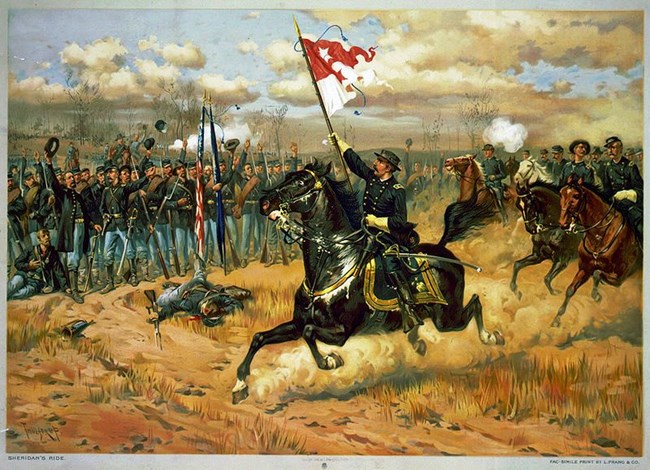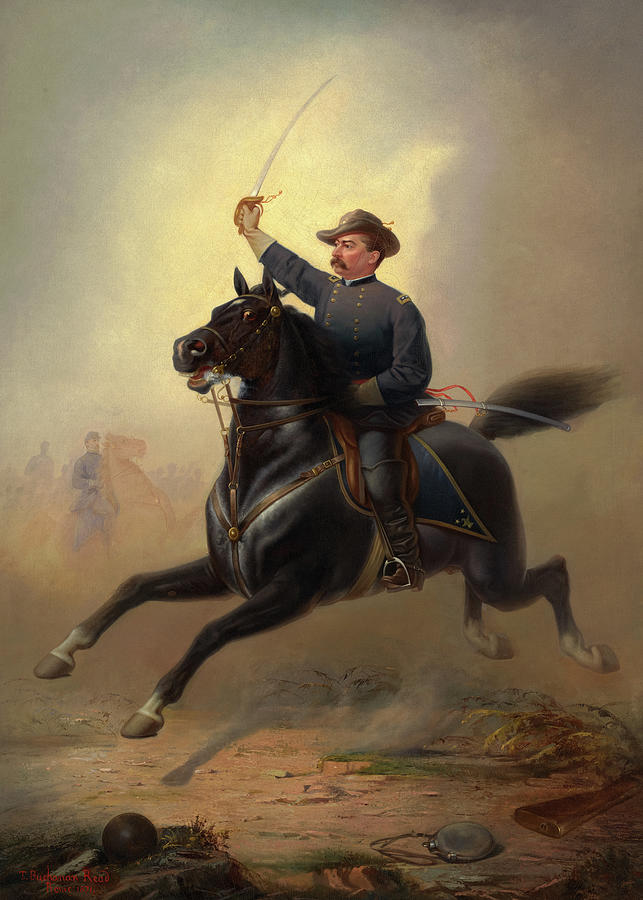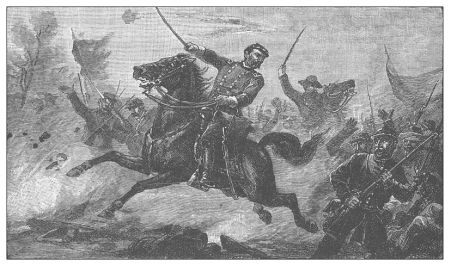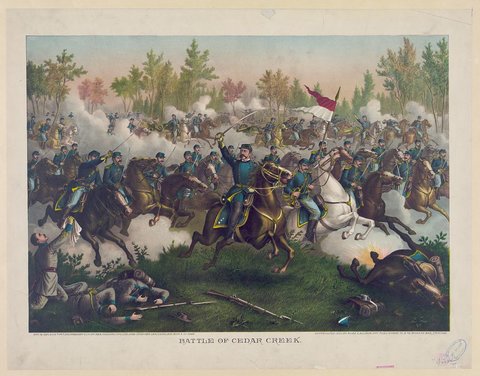Symposium Spotlight: A Horse Named Rienzi
With less two months remaining until our symposium, several of our authors further explore topics relating to their ‘What If’ theme. Today, Sarah Kay Bierle shares a little about General Sheridan’s famous horse…
Meet Rienzi.

That’s right, the old war horse was subjected to taxidermy after his death in 1878 and now resides on display at the Smithsonian’s National Museum of American in Washington D.C. Although the horse survived approximately 40 military engagements, his most famous moment happened during the battle of Cedar Creek on October 19, 1864. Union General Philip Sheridan rode Rienzi from Winchester to the Union lines northwest of Middletown, a distance of about 12 miles. Sheridan’s return to his army is considered a key part of the rally, counterattack organization, and Union victory. In later years, stories and even poetry grew the legend about Sheridan and his horse at Cedar Creek.
So where did Rienzi come from? In 1862, officers from the Second Michigan cavalry gifted the three-year-old horse to Sheridan. The horse’s original name came from a town in Mississippi, though sometime after the famous moment in 1864, Sheridan changed the animal’s name to “Winchester.” Though the horse got several wounds during the war, he ultimately survived and even carried Sheridan to Appomattox around the time of the Army of Northern Virginia’s surrender.
Rienzi/Winchester had a loyal following among Union veterans. Thomas Buchanan Read’s popular poem “Sheridan’s Ride” published in 1865 kept the horse in 19th Century public memory. The poem over-credited Rienzi with a 20 mile gallop to get Sheridan to the battle at Cedar Creek; in reality, the ride was probably 12 miles, but the horse would’ve added some extra strides that day as Sheridan rode the battle lines to rally and encourage the Union soldiers. Then ending stanza of the poem reads:
Be it said, in letters both bold and bright,
“Here is the steed that saved the day,
By carrying Sheridan into the fight,
From Winchester, twenty miles away!”
Rienzi/Winchester was also immortalized in visual arts, including several popular paintings. It is curious to wonder if the artists actually saw the horse, though. Some of the art has a more “stylized” version of the dark horse with the large Roman nose.
At the 2022 ECW Symposium, I’ll be exploring the history of the battle of Cedar Creek and the timeline of Sheridan’s arrival, asking “what if” the general never arrived on the battlefield. “What if Rienzi had stumbled?” What are some possible/probable outcomes of the battle? How crucial was Sheridan’s arrival to that Union victory in the Shenandoah Valley? And how did the memory of Sheridan’s ride — including paintings, poems, and his horse — shape how we view the battle of Cedar Creek? Come explore the primary sources and reconsider the battle on October 19, 1864!
Find more information on our 2022 Symposium, and purchase tickets, by clicking here. Ticket quantities are limited!





The story of Rienzi brought to mind the story of Little Sorrel, General Jackson’s steed. What happened to that horse? Isn’t he buried at VMI? Please expound.